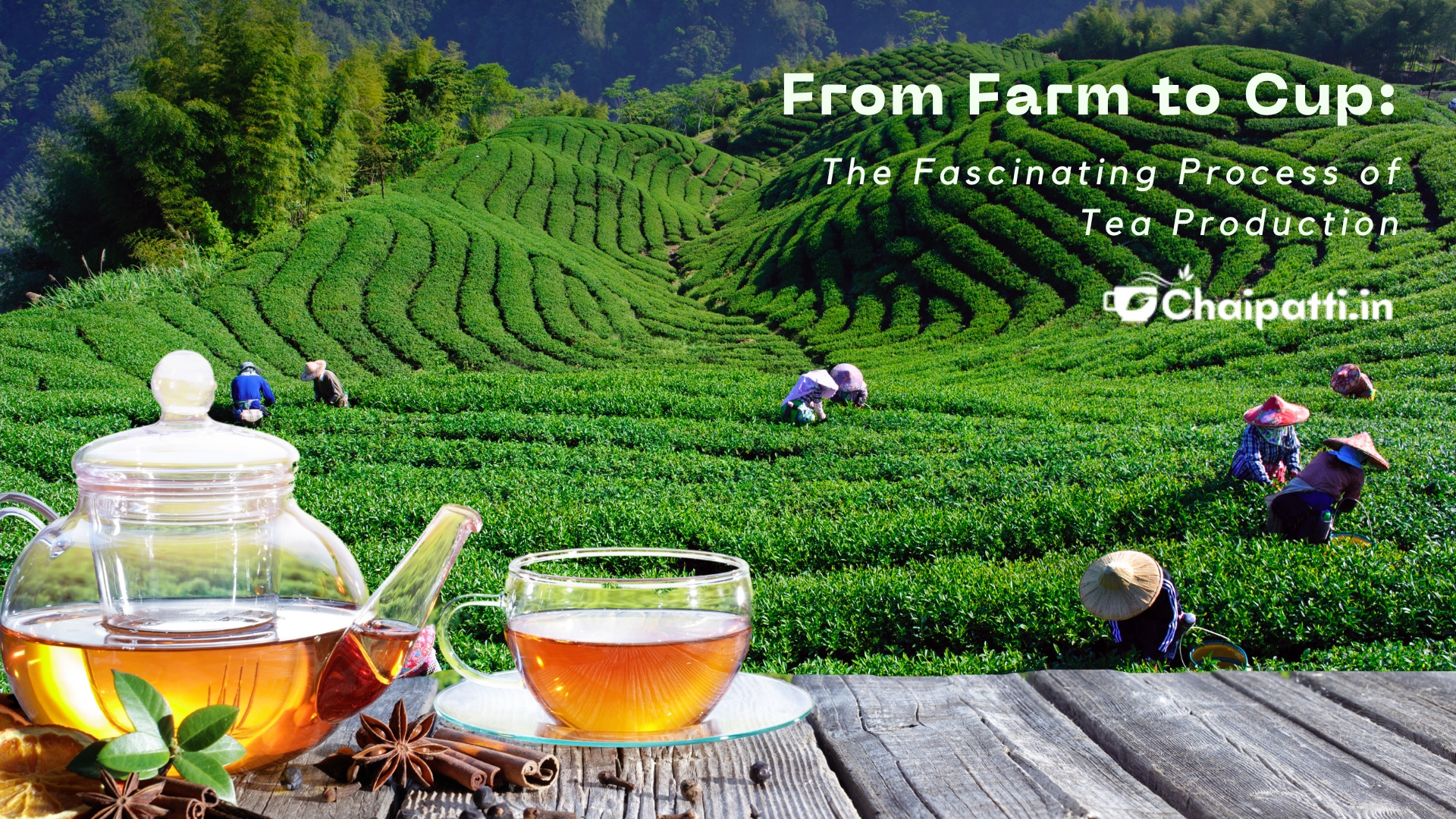- Your cart is empty
- Continue shopping

Tea is one of the most popular drinks in the world, and its past goes all the way back to ancient China. But have you ever thought about how this drink you love gets from the fields to your cup? In this blog post, we’ll take a closer look at the interesting process of making tea, from the tea plantations to the tea factories.
Tea Plantations and Harvesting
Tea is grown in China, India, Sri Lanka, Japan, Kenya, and other places. Camellia sinensis, the tea plant, is a shrub that grows best in warm, wet places. Depending on the type of tea and where the farm is, the leaves can be picked by hand or with a machine.
The usual way to get tea leaves is to pick them up by hand. Only the top two leaves and the bud of each tea plant are picked by people who are good at what they do. This process takes a lot of time and skill, but the tea that comes out of it is better. Machine picking is faster and more efficient, but it can hurt the tea leaves and lower the quality of the tea.
How Tea Is Made
After the tea leaves have been picked, they go through a number of steps that depend on the type of tea.
- Withering: The tea leaves are spread out and left for a few hours to wither. This process makes the leaves more flexible by reducing the amount of water in them.
- Rolling: The juices and enzymes inside the dried tea leaves are then released by rolling them. This process also gives the leaves their distinctive forms, such as curls, balls, or strips that are twisted around each other.
- Oxidation: The rolled tea leaves are put in a cool, moist place to oxidize. This step is very important for the taste and smell of the tea. Green tea has not been altered at all, but black tea has.
- Firing or Drying: After the tea leaves have been oxidized, they are either fired or dried to stop the oxidation process and get rid of any wetness that is left. During this step, the tea leaves also get their final color, taste, and smell.
Packaging and Distribution
Once the tea leaves have been handled, they are sorted and graded based on their size, quality, and taste. The tea leaves are then put into packages and sent to wholesalers or stores, who sell them to customers.
You can buy individual tea leaves or tea bags. Tea lovers prefer loose tea leaves because they come in a bigger range of flavors and smells. Tea bags are easy to use and handy, but the quality of the tea can be lower than that of loose tea leaves.
Final Thoughts
From the tea farms to your cup, it’s an interesting trip to see how tea is made. From picking the tea leaves by hand to carefully processing and packing them, each step adds to the unique taste, smell, and personality of the tea. So the next time you make a cup of tea, take a moment to think about how much skill and hard work goes into each sip.

